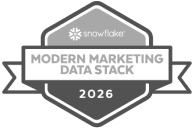How Are LLMs Used in Data Science and Analytics?
Leveraging Large Language Models (LLMs) in data science and analytics can revolutionize how data is visualized and interpreted. This tutorial will explore various strategies and tools that utilize LLMs to create innovative and impactful data visualizations.
What are Large Language Models (LLMs) and how do they work?
Large Language Models (LLMs) are advanced machine learning models trained on vast amounts of text data. They can understand, generate, and manipulate human language, making them highly versatile for various applications, including data science and analytics. LLMs use deep learning techniques, particularly transformer architectures, to process and generate text based on the context provided.
# Example of using an LLM for text generation
from transformers import GPT-3
# Initialize the model
model = GPT-3.from_pretrained('gpt-3')
# Generate text based on a prompt
prompt = "Explain the importance of data visualization in data science."
generated_text = model.generate(prompt)
print(generated_text)
This code snippet demonstrates how an LLM like GPT-3 can generate text based on a given prompt, showcasing its ability to understand and produce human-like text.
How do LLMs automate data visualization generation?
LLMs can automate the creation of data visualizations by interpreting natural language inputs and generating the corresponding visualization code. This reduces the need for extensive manual coding and allows users to focus on data analysis rather than technical implementation. Tools like LIDA exemplify this by providing a multi-stage pipeline that includes data summarization, goal exploration, and visualization generation.
- Automated Visualization Generation: LLMs can generate visualizations based on predefined templates or user-specified criteria, saving significant time and effort.
- Natural Language Interfaces (NLIs): NLIs enable users to create and modify visualizations through conversational prompts, making complex visualizations accessible to non-technical users.
- Data Summarization and Goal Generation: LLMs can summarize large datasets into concise narratives and generate relevant visualization goals, aiding exploratory data analysis.
What are the benefits of using LLMs for data visualization?
Integrating LLMs into data visualization workflows offers numerous benefits, enhancing the overall efficiency and impact of data presentations. These benefits include improved data discovery and analysis, reduced time and effort in visualization creation, enhanced user experience, and increased insights and decision-making capabilities.
- Improved Data Discovery: LLMs can analyze large datasets to identify patterns and relationships, facilitating more insightful visualizations.
- Enhanced User Experience: Personalized data exploration experiences tailored to individual user preferences can be created using LLMs.
- Increased Insights: Dynamic and interactive visualizations generated by LLMs can adapt to changing conditions, providing deeper insights.
What tools and applications leverage LLMs for data visualization?
Several tools and applications leverage LLMs to enhance data visualization processes. These tools automate various aspects of visualization, making it more accessible and efficient for users.
- LIDA: A comprehensive tool that includes modules for data summarization, goal exploration, visualization generation, and infographics creation, supporting multiple programming languages and visualization grammars.
- VisTalk: A proof-of-concept tool that extends Excel with verbal communication capabilities, allowing users to create and edit visualizations through natural language commands.
- Case Studies: Demonstrations of how LLMs can significantly enhance the quality and efficiency of data visualization tasks in various domains, such as data science and education.
What are common challenges and solutions when using LLMs for data visualization?
While LLMs offer numerous advantages, there are also challenges that users may encounter. Understanding these challenges and their solutions can help in effectively leveraging LLMs for data visualization.
- Data Quality: Ensuring high-quality input data is crucial for accurate visualizations. Preprocessing and cleaning data can mitigate this issue.
- Model Interpretability: Understanding how LLMs generate visualizations can be complex. Using explainable AI techniques can help in interpreting model outputs.
- Technical Limitations: LLMs may struggle with tasks requiring complex mathematical operations. Combining LLMs with traditional analytical methods can address this limitation.
Recap of How LLMs Are Used in Data Science and Analytics
In summary, LLMs can significantly enhance data visualization processes in data science and analytics. By automating visualization generation, providing natural language interfaces, and offering personalized data exploration, LLMs make data visualization more efficient and impactful.
- Automation: LLMs automate the creation of data visualizations, reducing manual effort and allowing users to focus on analysis.
- Personalization: Tailored data exploration experiences enhance user engagement and insights.
- Efficiency: Tools like LIDA and VisTalk demonstrate how LLMs can streamline visualization workflows, making them more accessible and effective.






.png)
.png)








